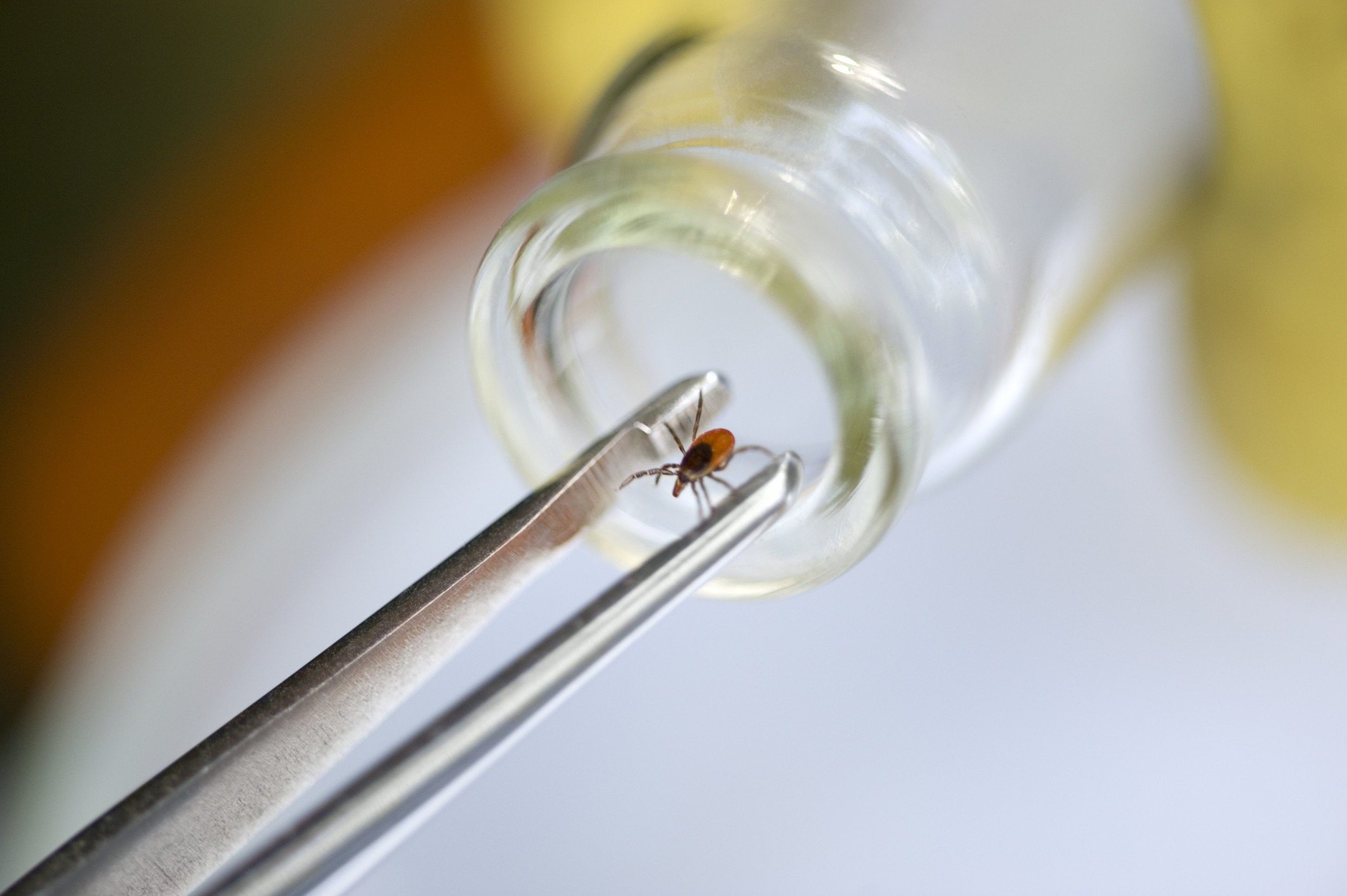Harvard Health Blog
Finding the tick in time could save you from Lyme!

“Doesn’t it typically happen during the summer?” asked a worried lady that had walked into my clinic in November with a growing circular rash on her wrist. She was referring, of course, to Lyme disease, that scourge of outdoor enthusiasts. While the peak season for Lyme disease is indeed summer, the ticks that transmit it are active March through December. And, while this may be off-season for the ticks, it is a good time to catch up on how to stay safe in the not-so-distant spring.
What is Lyme disease, and how do you treat it?
Lyme disease is caused by a bacterium called Borrelia burgdorferi which is spread to people through the bite of infected black-legged ticks, also popularly known as “deer ticks.” Early symptoms include a typical enlarging red rash (“bullseye rash”) at the site of the tick bite. This is common, but not everyone with Lyme disease gets this rash. Other signs of Lyme include flu-like symptoms (fever, fatigue, and headache). If left untreated, over time the infection can lead to Bell’s palsy (paralysis or weakness of facial muscles on one side), meningitis (inflammation in the brain and spinal cord), heart rhythm problems, and joint pain and swelling. Additional symptoms can include headaches and stiff neck, tingling and numbness (often in the hands and feet), and rarely, inflammation of the eyes.
The diagnosis is usually based on a person’s symptoms, the presence of the typical rash, and a history of likely exposure to infected ticks. Lab tests for Lyme disease do not turn positive until three to four weeks after the infection. Usually doctors do not wait for the results of these tests during the early stage of the disease, to begin treatment.
Once diagnosed, Lyme disease can be successfully treated with a few weeks of oral antibiotics. Doxycycline is the antibiotic prescribed to all but pregnant women and children, who usually get the antibiotics amoxicillin or cefuroxime. For people with severe heart or neurological symptoms of Lyme, intravenous antibiotics are usually necessary.
Here’s what you can do to keep from getting Lyme disease
As always, prevention is superior to cure. Right now, there is no Lyme vaccine available for people. There is a Lyme vaccine available for dogs! However, it does not protect against other tick-borne diseases, hence preventive measures against ticks are still necessary. Most dogs exposed to Lyme disease do not have symptoms. Some develop fever, lack of appetite, lameness, and joint swelling. Therefore, staying safe requires preparation and vigilance. The ticks that transmit Lyme disease are tiny, and you can’t feel it when a tick attaches to you. They may even make their way into your home by attaching themselves to pets. Here are some steps to follow to remain safe.
- Avoid wooded and bushy areas with tall grass and stick to the center of trails when hiking.
- Wear light clothing to make ticks easier to detect.
- Wear long pants tucked into socks to keep ticks on the outside of clothes.
- Use DEET or a permethrin-based tick repellent on clothing and outdoor gear.
- Pesticides like permethrin, fipronil, or amitraz may be used on dogs. These are available in the form of powders, impregnated collars, sprays, or topical treatments.
- Do remember to never use tick repellents that are intended for dogs on a cat! Cats are extremely sensitive to a variety of chemicals.
- When back home, shower or bathe as soon as possible and carefully inspect the entire body to remove any attached ticks. It takes up to 36 hours for the bacterium to be transferred after the tick bite. Prompt removal of the tick will reduce the chance of infection.
- Tumble dry clothes on high heat for at least 10 minutes to kill ticks.
- Carefully examine children and pets after outdoor activity.
If you find a tick along for the ride, here’s what you need to do
Use thin tipped tweezers to grasp the tick as close to the skin surface as possible. Pull the tick straight upward with steady even pressure to remove the tick with the mouthparts intact. Squeezing the tick will not increase the risk of infection. Adult ticks are a lot more difficult to remove intact. If the mouthparts break off, the chance of getting Lyme disease is the same as if you hadn’t removed the tick at all. After removing the tick, thoroughly clean the bite area and your hands with rubbing alcohol, an iodine scrub, or soap and water. Watch for signs and symptoms of Lyme disease for up to 30 days.
See your doctor within 72 hours of the tick removal and if the tick removed was swollen. You may benefit from preventive antibiotics. This is especially important if you live in (or have visited) an area where deer ticks are common.
Create a tick-free zone around your home
Need a little more motivation to mow the lawn or rake the yard? Remember that ticks lurk in tall grasses, brush, and weeds around homes and at the edge of lawns. Remove any old furniture, trash, or mattresses from the yard that may give the ticks a place to hide. Place a three-foot-wide barrier of wood chips or gravel between lawns and wooded areas and around patios and play equipment to restrict tick migration into recreational areas. Stack wood neatly in a dry area (this discourages rodents that carry the ticks). Keep playground equipment, decks, and patios away from yard edges and trees, and place them in a sunny location if possible.
Lyme disease is a painful but preventable condition. When you enjoy the outdoors this year, pay close attention to your environment and follow the steps mentioned above to stay safe and keep your family and your pets safe too!
References
Gary P, Wormser, Raymond J et al. The Clinical Assessment, Treatment and Prevention of Lyme Disease, Human Granulocytic Anaplasmosis, and Babesiosis: Clinical Practice Guidelines by Infectious Disease Society of America, Clinical Infectious Diseases, November 2006.
Tick Borne Diseases of the United States: A Reference Manual for Health Care Providers, Third edition, Centers for Disease Control and Prevention, 2015.
Tick Management Handbook: An integrated guide for homeowners, pest control operators, and public health officials for the prevention of tick-associated disease, The Connecticut Agricultural Experiment Station, 2007.
Meryl P. Littman, Richard E. Goldstein, Mary A. Labato, Michael R. Lappin, and George E. Moore. ACVIM Small Animal Consensus Statement on Lyme Disease in Dogs: Diagnosis, Treatment, and Prevention [PDF, 13 pages]. Journal of Veterinary Internal Medicine, March 2006
About the Author

Meera Sunder, MBBS, MRCOG, Contributor
Disclaimer:
As a service to our readers, Harvard Health Publishing provides access to our library of archived content. Please note the date of last review or update on all articles.
No content on this site, regardless of date, should ever be used as a substitute for direct medical advice from your doctor or other qualified clinician.















